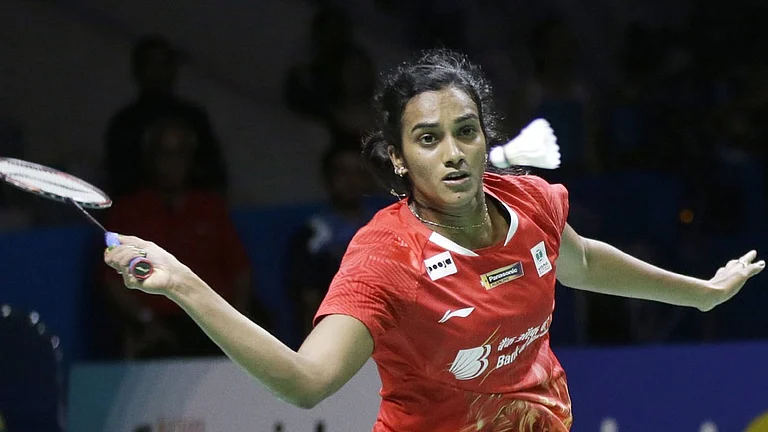Free market vs State regulation. Centre vs states. Central government vs farmers. The entire debate emerging out of the farmer protests and the farm crisis has been oversimplified between these three binaries. The ground reality is much more complex, more complicated and requires much more nuanced handling in the most geographically and historically diverse agricultural economy of the world. Scrapping the three contentious farm laws and providing remunerative minimum support price (MSP) as a legal entitlement to all farmers for all produce are two key demands, among others, of the protesting farmer organisations negotiating with the BJP-led Central government for the past two weeks. The Centre has ruled out the possibility of withdrawing the laws but has agreed to “give it in writing” about protecting the MSP.
The MSP regime was first set up in 1965 during back-to-back droughts in the mid-60s that had led to food riots in some parts of the country. Given the massive food scarcity, the main purpose was to boost food production and protect farmers from any sharp fall in market prices. Since then, MSP became a form of market intervention regime by the Centre, based on recommendations of the Commission for Agricultural Costs and Prices (CACP) and implemented by various state governments.
ALSO READ: Maximum Support Protest
Market cheerleaders make a sharp distinction between the food scarcity era of yesteryear and the food surplus era of today to argue in favour of ‘One Nation, One Market’, the new slogan of the NDA regime. They feel that the new market reforms will provide greater choices to farmers compared to the MSP regime that is tied to the Agriculture Produce Marketing Committees (APMCs).
ICRIER professor Ashok Gulati explains: “The MSP regime was the creation of the era of scarcity. Indian agriculture has, since then, turned the corner from scarcity to surplus. The policy instruments of dealing with shortages are different from those dealing with surpluses. In a surplus economy, unless we allow a greater role for markets and make agriculture demand-driven, the MSP route can spell financial disaster.”
ALSO READ: Minus And Maximus
Ashok Dalwai, CEO of the National Rainfed Authority who chairs the committee on doubling of farm incomes, agrees. “Legalising MSP today will lead to very high inflationary tendency and will make export markets uncompetitive. Besides, the choices that the farmers have today between state-run AMPC mandis and an alternative in the form of a free national market will reduce. Instead of freedom of choice farmers will end up with a monopoly.”

The government has been reiterating that MSP will be protected, but has steadfastly refused to put it within a legal framework, perhaps guided by the same MSP-free market conundrum argument. Others say this logic is flawed. “The assessment that legalising MSP is going to end up in financial disaster or that it will end up in extraordinary levels of inflation or decline in export competitiveness is greatly exaggerated,” says Abhijit Sen, former chairman of the CACP and an ex-member of the now-defunct Planning Commission.
ALSO READ: ‘New Laws Not Related To MSP’
MSP is not antithetical to the idea of a free and fair market. Instead, it helps reduce extreme market fluctuations and volatility which can play havoc with the lives and livelihoods of millions of farmers across the country, says Sen. “Market cheerleaders who argue that we live in an age of commodity and grain surplus forget that price volatility today is worse than in the past.”
But legalisation of MSP might mean different things to different people. Experts say that MSP for all agricultural commodities may be difficult to implement as it will end up becoming a major policing problem. They say there are other routes to achieve minimal legal guarantee of MSP. The government can provide a statutory basis to the CACP, which recommends MSP prices to the Centre. They point to the system followed in the sugarcane sector, where the government provides a statutory minimum price to growers. World Trade Organization (WTO) guidelines allow MSP, Sen says, arguing that it is because of MSP that the Indian agricultural markets in the past were much less volatile than the global markets. “Because of MSP guarantees in the past, Indian agricultural markets were 20-25 per cent less volatile than global markets in agriculture commodities.”
ALSO READ: Sow Only After Preparing Soil
Trouble began once MSP became a political and an electoral issue. In 2009, the Congress-led UPA won the Lok Sabha polls with a promise to increase MSP. However, in 2013-14, despite MNREGA and higher MSP prices, the UPA was booted out of office.
Similarly, the NDA used MSP as an electoral issue, both in the 2014 and 2019 Lok Sabha elections. While the promise of hiking the MSP by 1.5 times was undoubtedly successful in attracting farmers to vote for the BJP in 2014, the increase was finally announced four years later in 2018, less than a year before the general elections. The “MSP+50 per cent” announcement as public policy was first made in the 2018 budget by then Union finance minister, Arun Jaitley, who said that “this historic decision will prove an important step towards doubling the income of our farmers”.
Doubling farmers’ incomes was promised by Prime Minister Narendra Modi during his Bareilly speech a day before the 2016 budget. Modi had elaborated on the issue of MSP both during the March 2018 Krishi Unnati Mela as well as during his 42nd Mann Ki Baat in March 2018. “…An extensive exercise on agricultural reforms is being undertaken across the country to ensure that our farmers get a fair price for their crop,” the PM had said, drumming up support for LS polls.
The political and electoral promises of MSP by respective governments generated debate on three different estimates of MSP. The 2018 MSP hike led angry farmer organisations to point out that the formula for determining the rates of MSP is not based on a comprehensive basis as laid out by the Swaminathan Commission recommendations.

In July 2018, the All India Kisan Sangharsh Coordination Committee, the umbrella body of 194 farmer unions, announced a nationwide agitation to press for implementation of the Swaminathan Commission recommendations. The committee said, “it is highly disappointed by the Modi government announced MSP following which the farmer union has initiated a nationwide campaign for MSP to be calculated as per recommendation of the Swaminathan Commission report, that is, as per the comprehensive cost, known as C2”.
Agricultural scientist M.S. Swaminathan, heading the National Commission on Farmers, had in his 2006 report laid out a “holistic national policy” for farmers. “MSP,” he had spelt out, “should be at least 50 per cent more than the weighted average cost of production”. Thus, he ended up laying the template for calculating MSP. Farmer organisations swear by the Swaminathan formula. However, the UPA and NDA governments never accepted the formula.
According to a report submitted by the NDA government-appointed high-level committee on restructuring FCI, only 5.8 per cent of farmers in the country can sell their crops at MSP. Today, it is much higher at 9 per cent, estimates Ashok Dalwai. Only states like Punjab, Haryana, Madhya Pradesh, Uttar Pradesh, Tamil Nadu, Andhra Pradesh, Odisha and Chhattisgarh have some MSP procurement mechanisms in place. Most eastern Indian states have pitiful procurement.
A September 2017 study, titled Awareness about MSP among Farmers, based on the National Sample Survey Office 70th round data, observed: “Only between 20.04 per cent and 23.72 per cent of farmers in rural agricultural households in India are aware of MSP for crops grown by them....” The study concludes that “MSP needs to be backed by effective procurement coupled with awareness creation to enable more number of farmers to take benefit of this safety net”.
For the protesting farmers, the three new farm laws rushed by the NDA government in September are just “kale kanoon” (black laws) and nothing short of their scrapping is acceptable. “Our demands are crystal clear, withdraw the three kale kanoon by calling a special session of Parliament and legalise MSP…we will not bargain with the government for amendments,” asserts Shiv Kumar Sharma, aka Kakkaji, one of the key negotiators with the NDA government.
“These laws have been passed at the behest and behalf of big agribusiness,” says V.M. Singh, convenor of AIKSSC. Hanan Mollah, former parliamentarian and general secretary of the All India Kisan Sabha, is convinced that the “farmer is not at the centre of the recent market reforms”.
Abhijit Sen accepts that the NDA government has been attempting to make some reforms, but argues that such attempts—new markets, contract farming, and others—have been made over the past 20 years. “The mistakes made by the Modi government is legal and constitutional. Agriculture is unambiguously a state subject, the Centre should not have entered the domain of the states. Agriculture is too complex and complicated and diverse, different historical and geographical practices in each state. After all, what machinery does the Central government have at its command to implement any of the agri-reforms?” he questions.
In a tearing hurry to implement reforms that should have been done gradually after talking to all stakeholders—states, farmers, citizens—the NDA government ended up digging itself deeper and deeper into holes. Today, it is beyond free markets versus State regulation. The perception among farmers is that it is tied to crony capitalism. The only way out from this crisis is to repeal the laws, rather than discuss amendments with farmer organisations, says Sen.

























